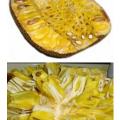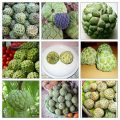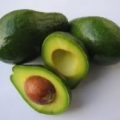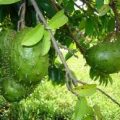Who doesn’t know jackfruit or langka?
In the Visayas, jackfruit is a priority commodity. In fact, major jackfruit growing areas in the country are located in Western, Central and Eastern Visayas wherein almost half of the total land area is allotted to jackfruit production.
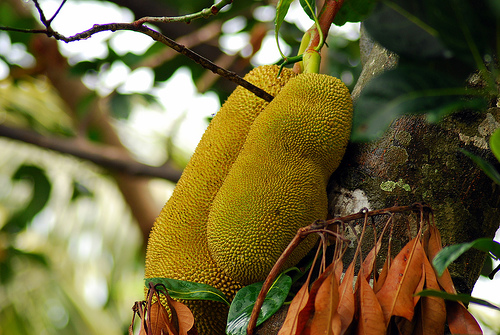
To many, jackfruit is grown mainly at backyards because it used to be mainly for family consumption, either as vegetable when it is still young or as dessert and processed food when mature or ripe. It is planted erratically and usually left to grow until it bears fruits. Jackfruit trees are not demanding and bear fruits about 5 to 6 years after planting.
Aside from its usual use, jackfruit has other uses. The rags or the non-edible portion of the fruit is very rich in pectin and can be used in the preparation of jelly. There is now a great demand for it among local manufacturers. Unknown to many, its wood is used in the manufacture of guitars.
At the international market, the potential of this fruit lies on the processed products. In 1995, the Animal Husbandry and Agricultural Journal reported that the Philippines export earnings from jackfruit averaged about half a million dollars annually.
But this earning could go higher if the jackfruit’s potential is developed. Likewise, the country could develop the other uses of this multi-purpose fruit tree for value-added benefits.

Low production
The low production of jackfruit in the country is attributed to the poor cultural management practices of our farmers, which could be due to the lack of sufficient information and technical skills of the farmers or producers. Or they produce only a volume that they think is enough for their own consumption.
To boost production and, likewise, advance commercialization, the Eastern Visayas Integrated Agricultural Research Center (EVIARC) of the Department of Agriculture launched a five-year on-farm technology demonstration project in Region 8.
The techno demo is done right in the farmer’s field so that farmers could right away see for themselves the result of using the package of applicable technology (PAT) under local environmental conditions.
The on-farm techno demo
The on-farm techno demo aims to improve the technical and economic efficiency and productivity of jackfruit farmers by showing them the relative advantage of the recommended package of applicable technology over that of the farmer’s practice.
Thirteen techno demo projects were established, each having a one-hectare area for the key production areas (KPAs) for fruit trees in Region 8 with 6 sites in Leyte, 2 in Biliran, 2 in Samar province, 1 in North Samar and 2 in Southern Leyte.
Recommended varieties of jackfruit were planted in the farm demo site. The planting schemes used were monocropping and intercropping.
The recommended package technology used asexual reproduction in planting since grafted planting materials bear fruits so much earlier than those sexually propagated.
The technology also included limiting the number of fruits per tree per year for them to reach full maturity while all the other fruits on the tree have to be removed. The reason of which is to produce bigger size and better quality of ripe fruits.
Products of technology
In terms of the number of years before fruiting, the jackfruits planted on the demo sites yield more fruits at shorter period of time. For instance, in two and a half years from their establishment, about 40-50% of the 450 jackfruit trees planted had reached full bearing stage and increased to 60-80% for the following year. Remarkably, all the jackfruit trees bear fruits after four years.
The demo project also proved that asexual planting materials bear fruits earlier than those sexually grown since it took only 4 years for the trees to bore fruits instead of 5-6 years.
The number of productive trees in techno demo farms is much higher with 77% as compared to only 55% of non-techno demo farms. Meanwhile, in terms of the number of fruits produced per tree, jackfruits planted in techno demo farms averaged higher with 18 fruits per tree. The fruits are much larger and heavier averaging to about 18 kilograms as compared to only 9 kilograms from the non-techno demo farms.
Fruits from the techno demo farms ranged from 11to 26 fruits per tree with an average weight of 10-15 kilograms per mature/ripe fruits.
In terms of cost, the techno demo farm incurred three times more than the non-techno demo because farmers spent for fertilizer, pruning and other activities during the development stage of the crops. But since production is higher, the farmers netted more. For instance, for the first five years after the techno demo was estblished, a one-hectare jackfruit farm in Ormoc was able to earn a total income of Pph 805,500 with a total production cost amounting to Pph 282, 830. That means, the net returns per hectare has amounted to Pph 522, 670.
———————
Source:
“Jackfruit Technology Demonstration Project” by Bebian C. Cajes, Danilo B. Palang, Elvira C. Torres, and Rufino B. Ayaso of the Eastern Visayas Integrated Agricultural Research Center or EVIARC, Department of Agriculture Region 8, Bagong Silang, Babatngon, Leyte.)
by Rita T. dela Cruz, BAR Chronicle, March 2002 Issue (Vol. 3 No. 5-6)
